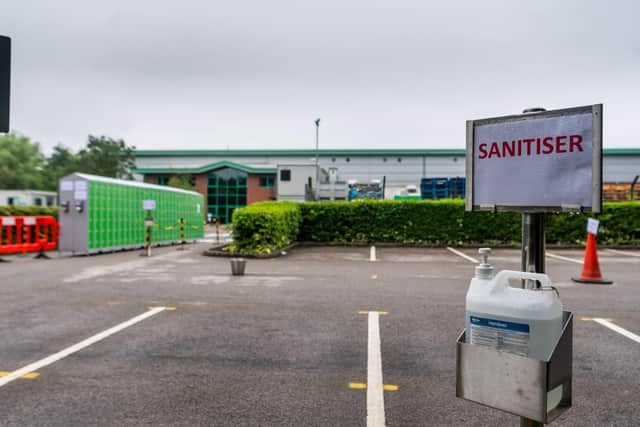R rate for coronavirus infections falls in Yorkshire and the North East
and live on Freeview channel 276
For the UK as a whole, the current growth rate is minus four per cent to minus two per cent and the estimate of the reproduction number, referred to as R, remains at 0.7 to 0.9.
The growth rate reflects how quickly the number of infections is changing day by day, and, as the number of infections decreases, is another way of keeping track of the virus.


Advertisement
Hide AdAdvertisement
Hide AdIn the North East and Yorkshire, which is treated as one region by the Government, the R rate is said to be between 0.7 and 0.9 but is shrinking at a rate of between five per cent and one per cent.
It comes after Health Secretary Matt Hancock revealed an outbreak of coronavirus in Kirklees as he insisted plans for local lockdowns were already up and running.
Mobile testing tents were set up on Thursday outside Kober Ltd near Cleckheaton, which supplies the supermarket giant with bacon rashers and joints.
It is not known how many staff tested positive for Covid-19 or if there have been any hospitalisations or deaths as a result.
Advertisement
Hide AdAdvertisement
Hide AdAround 100 contacts of workers have since been traced after a 'small number' of cases.
The revelation comes after local leaders and directors of public health said they were in the dark about what a local lockdown actually was, and whether they had the power to enact it.
On R rates, if the growth rate is greater than zero, and therefore positive, then the disease will grow, and if the growth rate is less than zero, then the disease will shrink.
It is an approximation of the change in the number of infections each day, and the size of the growth rate indicates the speed of change.
Advertisement
Hide AdAdvertisement
Hide AdFor example, a growth rate of plus five per cent is faster than a growth rate of plus one per cent, while a disease with a growth rate of minus four per cent will be shrinking faster than a disease with growth rate of minus one per cent.
Until the figures were published for the first time today, the Government had only been giving details of the R value of the disease - the average number of people an infected person is likely to pass it on to.
R estimates do not indicate how quickly an epidemic is changing and different diseases with the same R can result in epidemics that grow at very different speeds.
For instance, a disease with R=2 with infection lasting years will grow much more slowly than a disease with R=2 with infection lasting days.
Advertisement
Hide AdAdvertisement
Hide AdGrowth rates provide different information from R estimates, by suggesting the size and speed of change, whereas the R value only gives data on the direction of change.
To calculate R, information on the time it takes for one set of people in an infected group to infect a new set of people in the next group is needed.
However, the growth rate is estimated using a range of data similar to R, but it does not depend on the "generation time" and so requires fewer assumptions to estimate.
Neither measure - R or growth rate - is better than the other but each provides information that is useful in monitoring the spread of a disease.
Experts say each should be considered alongside other measures of the spread of disease.
Comment Guidelines
National World encourages reader discussion on our stories. User feedback, insights and back-and-forth exchanges add a rich layer of context to reporting. Please review our Community Guidelines before commenting.